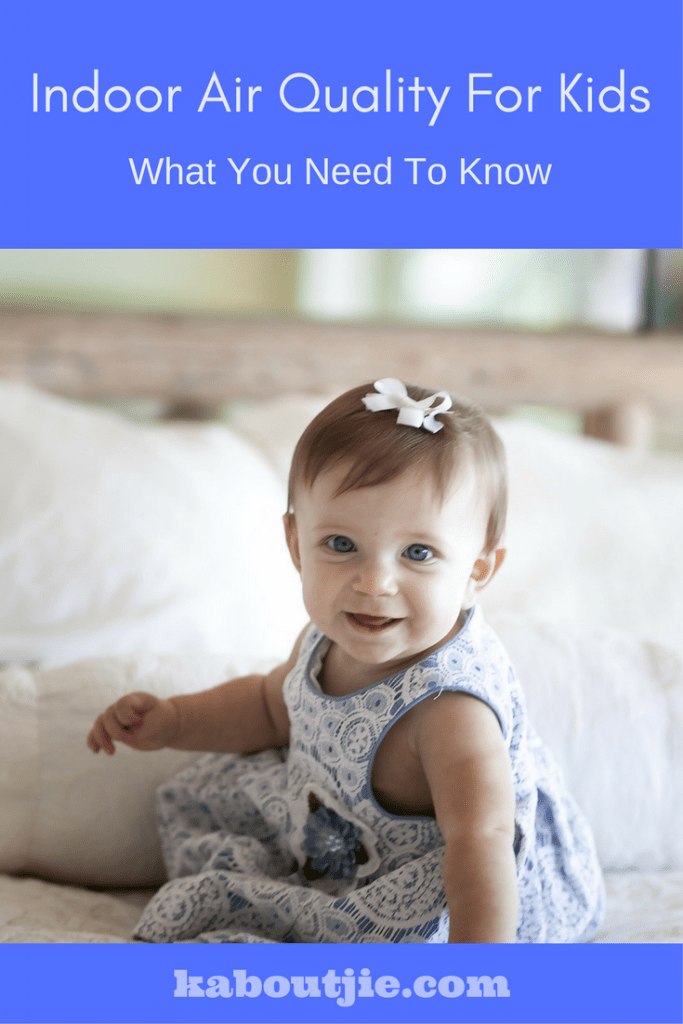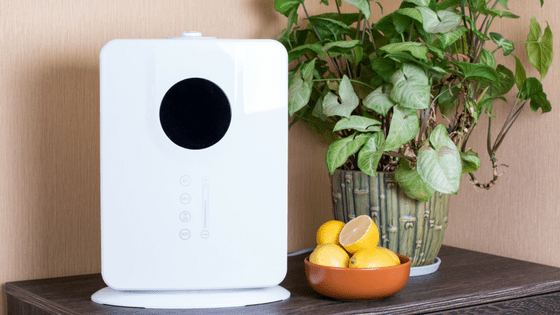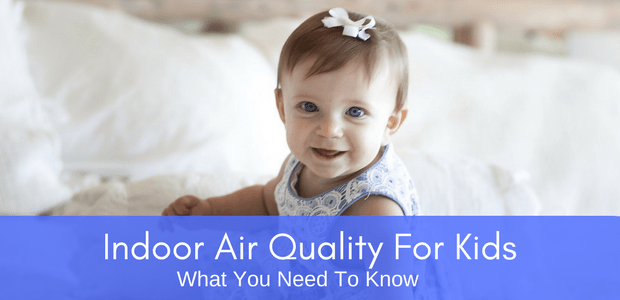As your kids grow up, it can be more and more difficult to keep them under your wing. Whether your baby is preparing for their first day of kindergarten, a middle school class trip, their first time behind the wheel, or life in a college dorm, through the many stages of your child’s life one thing never changes: how much you love and care for them. As a parent, you probably have a thousand concerns for your kid on your mind—but one that doesn’t always make the list is indoor air quality at home and at school. From common pollutants to mold prevention, here are a few things to know about how indoor air quality affects kids, and how to improve it if necessary.

Kids Take In More Air Than Adults Do
By their nature in size, you’d think that children take in less air than adults do. Though they do take in a total smaller volume of air, children take in more air per pound of body weight than adults do. In other words, while children take in less air overall, the amount of air they take compared to their body weight has higher impact. That means air pollution can have a stronger impact on children than it would on adults, so taking precautions is especially important.
Air Pollutants Come From A Number of Everyday Places:
When we think of pollution, we often think of dark gray clouds rising over cities and smog infiltrating our daily lives. Those are some of the most common types of pollutants, and reducing your exposure to them is pertinent. However, even if you live in a city that doesn’t have a serious air pollution problems, there is still risk of exposure. Some other common pollutants include:
- Radon: a naturally occurring gas that has harmful effects on the respiratory system
- Second Hand Smoke
- Volatile Organic Compounds: (or VOC’s) including pesticides, chemicals, and cleaning supplies etc.
- Carbon Monoxide

Health Symptoms From Air Pollution Include:
In recent years, The Environmental Protection Agency (EPA) and Science Advisory Board (SAB) have ranked indoor air pollution as one of the five most harmful effects of public health. To avoid heightened risk and continued health effects, it’s important to make cleaner air quality a priority. Symptoms and health risks tied to air pollution include:
- Allergy symptoms
- Coughing
- Headaches
- Sneezing and shortness of breath
- Dizziness and Nausea
- More serious health effects such as carbon monoxide poisoning in very serious cases
How can you avoid these symptoms and improve indoor air quality?
Now you know some of the risks of low quality air. So how can you fix it? The EPA recommends taking three actions:
- Controlling the source of the pollutants: Eliminating asbestos containing materials, and decreasing the amount of emissions in gas stoves and other appliances. See a complete FAQ on asbestos in the home here.
- Improving ventilation: Such as installing fans and vents as well as reducing indoor exposure when painting or other chemical procedures
- Investing in indoor air purification systems: There are a number of different products and services the EPA recommends for installing purification systems at home.

Beyond these concrete actions, a few other areas in which to be pertinent include:
Preemptive Indoor Air Quality Testing
The best way to know if you’re inching towards poor air quality or breathing heavy particles of contaminants is to inquire with a local air quality assessor in your area. It is recommended to perform these checks anywhere from every 5-10 or 10-20 years depending on your region and climate. What do air quality tests, test for? Air quality testing and inspections cover visual assessments of heating, ventilation and filtration systems, as well as environmental data (temperature, humidity, CO, CO2, and VOC’s) and mold spore testing for every room.
Mold Prevention
Mold isn’t only unsightly, it can cause a number of negative health effects for your and your family. While it seems like something you might only find in dank corners of buildings or forgotten wet places in your home, mold is more prevalent than many people think. By reducing standing water in your home and frequently cleaning sinks and bathrooms you can significantly reduce allergens caused by mold in your home.
Be in the Know About Asbestos
While many people have heard of asbestos, not everyone knows exactly what it is and how it affects people. “Asbestos” is the name for a number of naturally occurring mineral silicates that can be found in many types of old building materials. Exposure to asbestos can cause a myriad of health effects most often in the respiratory system. Asbestos testing and surveys are required for most demolition and remodels to avoid exposure and contain any asbestos that is found.
If heeded, these bits of advice can contribute meaningfully to your children’s health, and benefit everyone in the home. Although it’s not helpful to stress over the possibility of contamination affecting your children, it’s important to be in the know about the ways in which you can remedy some of the issues that may arise. Better air quality in the home is a good thing for all members of your family, and most especially your littlest loved ones.
About The Author
Dan Ventura, is the Owner of Hawk Environmental Services. Hawk Environmental Services is a neutral, third-party consultant and inspection firm offering practical solutions for indoor air quality, energy-efficient and healthy buildings based on expert technical knowledge and years of experience.
Hawk Environmental On Facebook
 Kaboutjie SA Mommy Blogs by Lynne Huysamen
Kaboutjie SA Mommy Blogs by Lynne Huysamen





We have an air purifier as well as a humidifier. I bought lots of essential oils that are compatible with both the purifier and the humidifier. However one needs to be careful with your pets as some of these essential oils are toxic to cats and dogs.